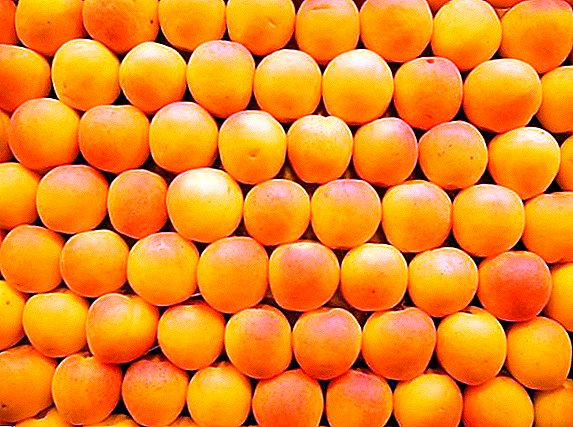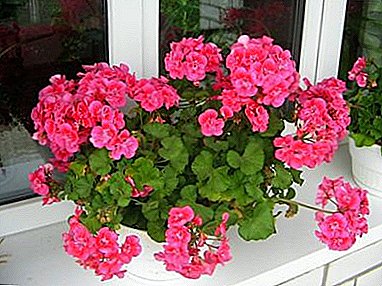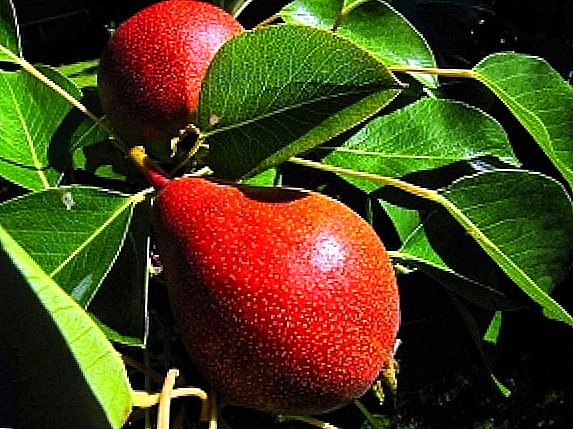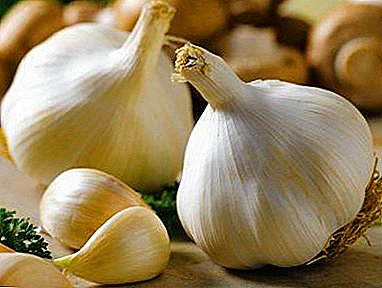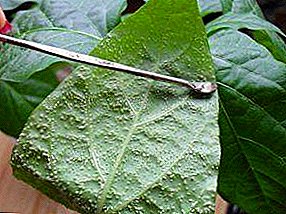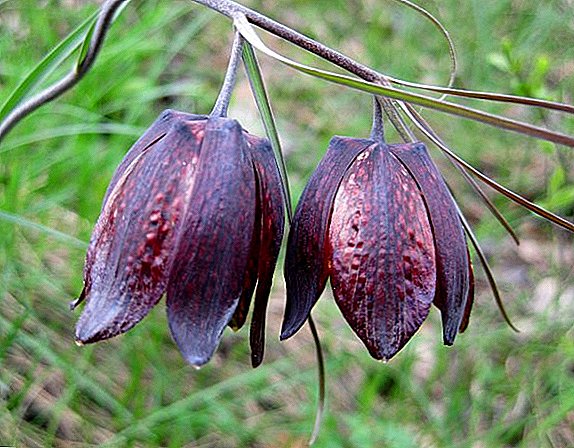 With the onset of spring, almost immediately after the snow melts and the first sun is warming, with our flowering we are pleased with many favorite fritillary or grouse. One of the most popular species is the imperial one, which is known to many as the “royal crown”. This flower is very popular with many gardeners. But there are among the fritillary and unique species that are listed in the Red Book and are protected today. It is to such rare plants belongs grouse Russian.
With the onset of spring, almost immediately after the snow melts and the first sun is warming, with our flowering we are pleased with many favorite fritillary or grouse. One of the most popular species is the imperial one, which is known to many as the “royal crown”. This flower is very popular with many gardeners. But there are among the fritillary and unique species that are listed in the Red Book and are protected today. It is to such rare plants belongs grouse Russian.
Botanical description
This perennial belongs to the family Lily. It blooms from the beginning to the end of spring. The plant propagates by means of bulbs, from which a thin stem grows no more than half a meter high, and also with the help of seeds.  In the upper part of the smooth and thin stem there are threadlike leaves, at the bottom their ends are twisted in the form of spirals. The lower leaflets are longer than the upper ones. Grouse leaves are sharp, from 6 to 9 cm long and from 2 to 5 mm wide.
In the upper part of the smooth and thin stem there are threadlike leaves, at the bottom their ends are twisted in the form of spirals. The lower leaflets are longer than the upper ones. Grouse leaves are sharp, from 6 to 9 cm long and from 2 to 5 mm wide.
Flowers fritillaria collected in racemes at the top of the plant or in the axils of the upper leaves. They have a dark red color, on which there is an even darker chess pattern. Inside the flower is yellowish, each lobe is outlined with a greenish strip.
The perianth is much longer than the pedicels. The stamens are shorter than the pistil, which is divided into three separate stigmas to the middle of the column.
Fruits of the hazel grouse - a small box in the shape of a hexagon with a slightly dulled top and narrowed bottom. The average size is 3.5 × 1.8 cm.
Kinds
Fritillaria, besides Russian, has a few more species, many of which can often be found in summer and garden plots:
- hazel grouse imperial;
- hazel grouse chess;
- hazel grouse of Mikhailovsky;
- hazel grouse Persian;
- hazelnut Kamchatka;
- hazel grouse yellow.
Read more about grouse species.
Cultivation and care
Hazel grouse is a rather unpretentious plant, but still you should observe the rules of planting and care so that this unusual flower becomes a real decoration of your garden. 
Soil preparation
Plant out seed from late August to early September. Later planting can lead to the death of plants. Perennial can die, if you plant it in wet soil or in lowlands. These flowers feel comfortable in well-lit places. The soil must be rich and well drained. The hole after planting must be filled with soil with the addition of peat or humus.
Did you know? The stylized image of the hazel grouse of Russian adorns the coat of arms of the city of Serpukhov, Moscow Region.
Spreading the bulbs
Fritillary bulbs require careful and careful treatment. The hazel grouse planting material reacts very strongly to any mechanical damage: any room or cut can cause the bulb to dry out and then die.
The bottom of the landing hole is sprinkled with large river sand - in the fine sand, the bulbs can simply rot and die. Planting bulbs, slightly tilting them to one side, - this also protects the planting material from rotting, eliminating the possibility of fluid accumulation between the bulb scales.  Before planting, it is better to disinfect the roots. This can be done with a solution of potassium permanganate followed by powder treatment of charcoal. Transplantation of bulbs should be carried out 1 time in 5-6 years. To do this, dig out the bulbs and leave in a cool, well-ventilated room for a half to two months. During this time, roots appear on them, and they are ready for planting in the soil.
Before planting, it is better to disinfect the roots. This can be done with a solution of potassium permanganate followed by powder treatment of charcoal. Transplantation of bulbs should be carried out 1 time in 5-6 years. To do this, dig out the bulbs and leave in a cool, well-ventilated room for a half to two months. During this time, roots appear on them, and they are ready for planting in the soil.
Important! Grouse bulbs are best kept in a damp and cool place. Ideal compartment for fruit in the refrigerator. Before sending planting material for storage, the bulbs should be packed in wet peat or live moss.
Landing technology
Perennials are planted according to the standard for all bulbous technology, when the planting depth is three times the size of the bulb. Shallow planting of plants can lead to the fact that hazel grouse just will not bloom. For the winter, a bed of hazel grouses should be well insulated with loose material so as not to cause dampening and death of the plant. Best for this purpose fit dry healthy leaves.
Video: how to plant grouse
Watering
When watering a plant, you need to remember that the roots of even faded plants must be located in moist soil. Watering is necessary only a couple of times a month, but you need to make sure that the earth does not dry out.
Top dressing
Fritillae planted in open ground should be fed during flowering. To do this, you can use wood ash, which is scattered around the flower, followed by mulching with humus or peat. Before flowering, in the middle of April, it is best to feed hazel grouse with nitrogen-containing fertilizers, for example, ammonium nitrate.
Learn how to grow a close relative of the hazel grouse of Russian - imperial grouse.
Transfer
The time for transplanting hazel grouse comes when the plant has already finished the growing season. To please with lush flowering in one place these perennials can for 3-4 years. Then the bulbs should be dug, but you need to remember that they do not have scales, so you should not let them dry out. To do this, they need to be transplanted into the ground as quickly as possible.
Storage of planting material
The bulbs are stored in dry, well-ventilated areas, where the air temperature does not rise above 30 ° С even in summer. In July and August, the roots begin to grow rapidly, so it is very important to provide the grouse with appropriate storage conditions for the autumn planting. 
Did you know? The fritillary bulbs protect the green spaces with which they grow alongside from moles, bears, mice and shrews.
Breeding
There are several main ways of reproduction of fritillary: seeds and vegetatively (by children and division of the bulbs).
Seed propagation
Seeds of perennial harvested after complete drying of the box and immediately sow them in a specially prepared soil. To ensure good drainage, the sowing grooves must be at least 10 cm wide and about 1 cm deep.
The width between the rows should be equal to the width of the furrow. Then the seeds are watered and sprinkled with a layer of peat (no more than 2 cm).
The first shoots of the plant will give next spring, and will begin to bloom only after 5-7 years. Therefore, this method of reproduction is not very popular. It is justified only when a large amount of planting material is needed.
Breeding kids
Bulbs grouse Russian do not form a lot of kids. But those that still grew on the main bulb, easily separated from it and planted in the fall in the soil in compliance with all the rules described above. This method is used more often than sowing seeds, because it is less laborious than the others, and the most effective.
Bulbs breed dahlias, allium, tulips, proleski, daffodils, chionodoxes, lilies, montbretias, licoris, snowdrops, candyks, crocuses, ixia, marshmallows.
Reproduction by dividing the bulbs
A flower can also be propagated by dividing a large bulb. To do this, it is cut into 2 parts and left for some time to dry cuts. It is best to dip the halves in a disinfectant solution, dry and sprinkle the places of cuts with ashes. Then the seed is planted in the prepared soil. This type of breeding allows you to get the first flowering of fritillary next year.
Important! Seed material obtained by dividing the bulbs should be planted a little earlier than regular roots, because it is less resistant to drying.

Use in landscape design
Russian grouse - the true king of the spring garden. It blooms one of the first and is good in some monogamous plantings in sunny places. The unusual color looks favorably on the alpine hills and rockeries. Low fritillary flowers are ideal for creating color accents in small isolated flowerbeds.
Learn how to arrange an alpine slide, rockeries, flower beds, mixborders, rose garden.
Difficulties in growing
These perennials are strong enough. The only thing that can provoke plant diseases is planting on waterlogged soils. This can cause bulb rot and a complete lack of flowering fritillary.
In addition, problems with flowering can occur not only because of improper care, but also because of the size of the bulb. Very small roots can cause a complete lack of flowering, or give a small and nondescript color.
The plant does not tolerate drafts and northerly winds. When planning planting a Russian grouse in his garden, this fact should be taken into account. 
Diseases and pests
Proper agricultural technology guarantees the almost complete absence of plant diseases. But there are some moments in the care of the Russian grouse that require special attention:
- Fungal lesion of the bulbs. To avoid the spread of the disease, planting material is carefully sorted out, separating diseased bulbs from healthy ones. The affected parts are removed with a knife, and cuts are treated with antiseptics. Planting such planting material should be on a separate flower bed.
- Lilac beetles and rattles. A small number of insects can be simply collected by hands from plants and destroyed. For mass lesions, special insecticides should be used.
The increased interest in the unusual and beautiful flower led to the fact that the Russian grouse is on the verge of extinction today. It is completely destroyed in its natural habitat in order to decorate it with flower beds and garden plots. This flower is unpretentious in the care and multiplies easily enough, just a pity that you can meet it today less and less.


